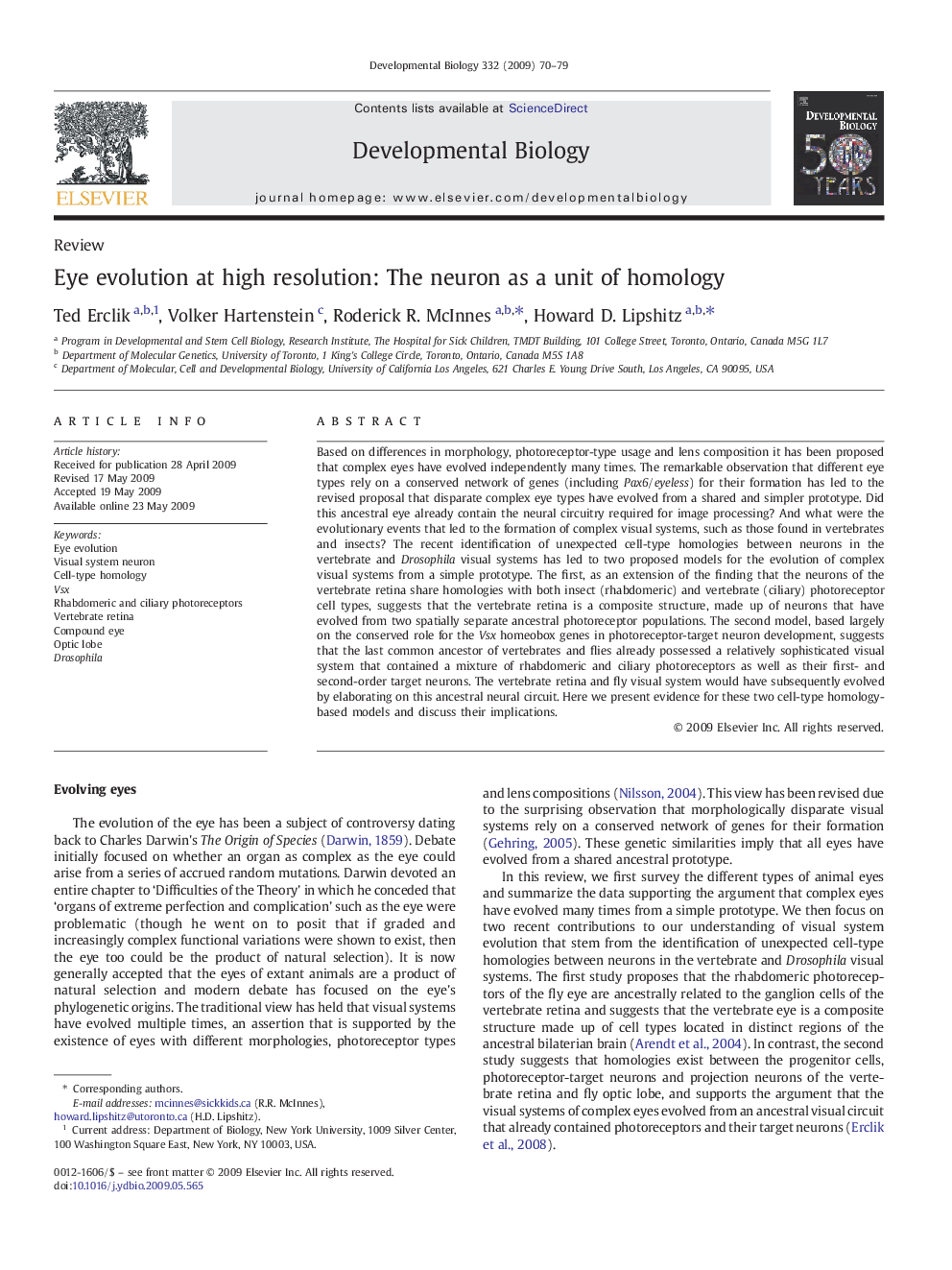| کد مقاله | کد نشریه | سال انتشار | مقاله انگلیسی | نسخه تمام متن |
|---|---|---|---|---|
| 2174095 | 1093781 | 2009 | 10 صفحه PDF | دانلود رایگان |

Based on differences in morphology, photoreceptor-type usage and lens composition it has been proposed that complex eyes have evolved independently many times. The remarkable observation that different eye types rely on a conserved network of genes (including Pax6/eyeless) for their formation has led to the revised proposal that disparate complex eye types have evolved from a shared and simpler prototype. Did this ancestral eye already contain the neural circuitry required for image processing? And what were the evolutionary events that led to the formation of complex visual systems, such as those found in vertebrates and insects? The recent identification of unexpected cell-type homologies between neurons in the vertebrate and Drosophila visual systems has led to two proposed models for the evolution of complex visual systems from a simple prototype. The first, as an extension of the finding that the neurons of the vertebrate retina share homologies with both insect (rhabdomeric) and vertebrate (ciliary) photoreceptor cell types, suggests that the vertebrate retina is a composite structure, made up of neurons that have evolved from two spatially separate ancestral photoreceptor populations. The second model, based largely on the conserved role for the Vsx homeobox genes in photoreceptor-target neuron development, suggests that the last common ancestor of vertebrates and flies already possessed a relatively sophisticated visual system that contained a mixture of rhabdomeric and ciliary photoreceptors as well as their first- and second-order target neurons. The vertebrate retina and fly visual system would have subsequently evolved by elaborating on this ancestral neural circuit. Here we present evidence for these two cell-type homology-based models and discuss their implications.
Journal: Developmental Biology - Volume 332, Issue 1, 1 August 2009, Pages 70–79